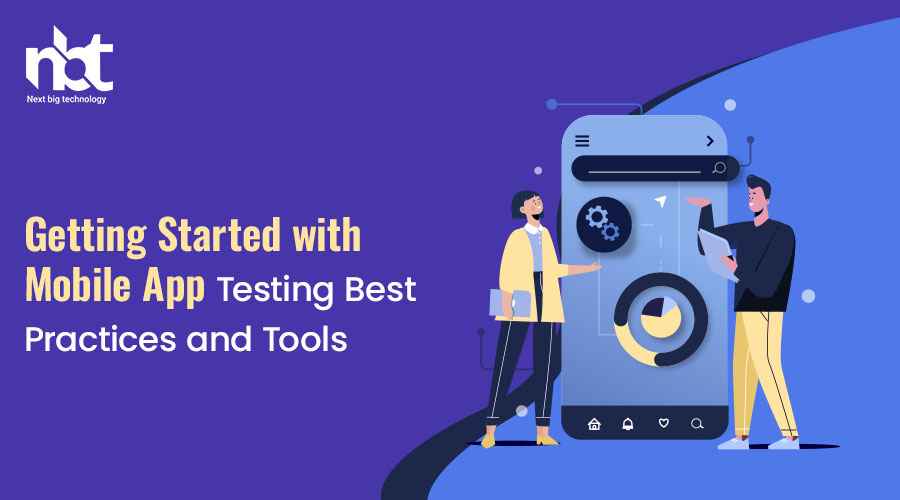Table of Contents
I. Introduction
A. Importance of Mobile App Testing
In the ever-expanding world of mobile applications, quality assurance is non-negotiable. Mobile app testing ensures that your app not only meets but exceeds user expectations. From functionality to usability, thorough testing guarantees a positive user experience.
B. Challenges in Mobile App Testing
Despite its significance, mobile app testing comes with its set of challenges. The diverse array of devices, operating systems, and network conditions make testing a complex process. Addressing these challenges is crucial for delivering a flawless app.
II. Best Practices for Mobile App Testing
A. Test Planning
Before diving into testing, meticulous planning is essential. Define your testing objectives, create test cases, and establish testing criteria. A well-thought-out plan sets the foundation for a comprehensive testing process.
B. Device Selection
With countless devices available, selecting the right ones for testing is vital. Prioritize devices based on your target audience and market share. Embrace diversity to ensure your app caters to a broad user base.
C. Usability Testing
User experience is at the core of mobile app success. Conduct usability testing to identify and eliminate any hurdles users may face. This includes testing navigation, accessibility, and overall user interface design.
D. Performance Testing
Performance issues can tarnish your app’s reputation. Test for responsiveness, load times, and resource usage to guarantee optimal performance under various conditions.
E. Security Testing
Security breaches can be disastrous. Incorporate security testing to identify vulnerabilities and fortify your app against potential threats. Protecting user data is paramount in today’s digital landscape.
III. Essential Tools for Mobile App Testing
A. Emulators and Simulators
Emulators and simulators are invaluable for testing on a range of devices without physical access. They offer a cost-effective way to cover diverse platforms during the testing phase.
B. Test Automation Tools
Automation expedites the testing process. Implement test automation tools to execute repetitive test cases, allowing your team to focus on more complex scenarios and ensuring efficient testing.
C. Performance Testing Tools
Dedicated tools for performance testing provide insights into how your app handles varying loads. Identify bottlenecks and optimize performance for a seamless user experience.
D. Security Testing Tools
Specialized tools can uncover security vulnerabilities that might go unnoticed during manual testing. Integrate these tools to fortify your app against potential threats.
E. Cross-Browser Testing Tools
Ensure your app functions across different browsers by utilizing cross-browser testing tools. This is crucial for reaching users on various platforms and enhancing overall accessibility.
IV. Common Mistakes to Avoid in Mobile App Testing
A. Neglecting Usability Testing
Usability is often underestimated. Neglecting usability testing can result in a subpar user experience, leading to negative reviews and decreased user satisfaction.
B. Limited Device Testing
Testing on a limited set of devices may lead to overlooking compatibility issues. Embrace a diverse range of devices to ensure your app performs seamlessly for all users.
C. Ignoring Performance Metrics
Focusing solely on functionality while ignoring performance metrics can lead to app crashes and slowdowns. Balance both aspects to provide a well-rounded user experience.
D. Neglecting Security Testing
Security breaches can have severe consequences. Neglecting security testing puts your app and users at risk. Prioritize security to build trust among your user base.
E. Skipping Cross-Browser Testing
Users have varying preferences when it comes to browsers. Skipping cross-browser testing may result in a disjointed experience for users, affecting your app’s credibility.
V. Real-world Examples of Successful Mobile App Testing
A. Case Study 1: Improved Usability Testing
Company X implemented thorough usability testing for their e-commerce app, resulting in a 20% increase in user satisfaction and a significant drop in customer support inquiries.
B. Case Study 2: Enhanced Performance Testing
By utilizing performance testing tools, Company Y identified and rectified performance bottlenecks in their gaming app. The result? Improved app responsiveness and a 15% increase in user retention.
C. Case Study 3: Strengthened Security Testing
A financial app underwent rigorous security testing, preventing a potential data breach. This proactive approach enhanced user trust, leading to increased app downloads.
VI. Future Trends in Mobile App Testing
A. Integration of AI in Testing
Artificial Intelligence is revolutionizing mobile app testing. AI-driven testing tools can analyze complex scenarios, making testing more efficient and accurate.
B. Continuous Testing
The future of testing lies in continuous testing. Regularly testing and integrating changes ensures a seamless user experience and swift issue resolution.
C. Blockchain-based Testing
Blockchain technology is making inroads into testing, providing enhanced security and transparency. This trend is poised to redefine how we approach security testing.
VII. Conclusion
In the dynamic world of mobile app development, testing is the linchpin for success. By following best practices and leveraging the right tools, you can navigate the complexities of mobile app testing. Embrace real-world examples, learn from common mistakes, and stay ahead of future trends to ensure your app stands out in the competitive market.
FAQs
- Is manual testing still relevant in mobile app testing? Manual testing is crucial, especially for usability and exploratory testing. While automation expedites certain aspects, manual testing remains integral.
- How often should I conduct performance testing for my mobile app? Ideally, performance testing should be conducted regularly, especially after significant updates. This ensures continued optimal performance.
- **What role does user feedback play in mobile app testing
Thanks for reading our post “Getting Started with Mobile App Testing: Best Practices and Tools”. Please connect with us to know more about Getting Started with Mobile App Testing.





















